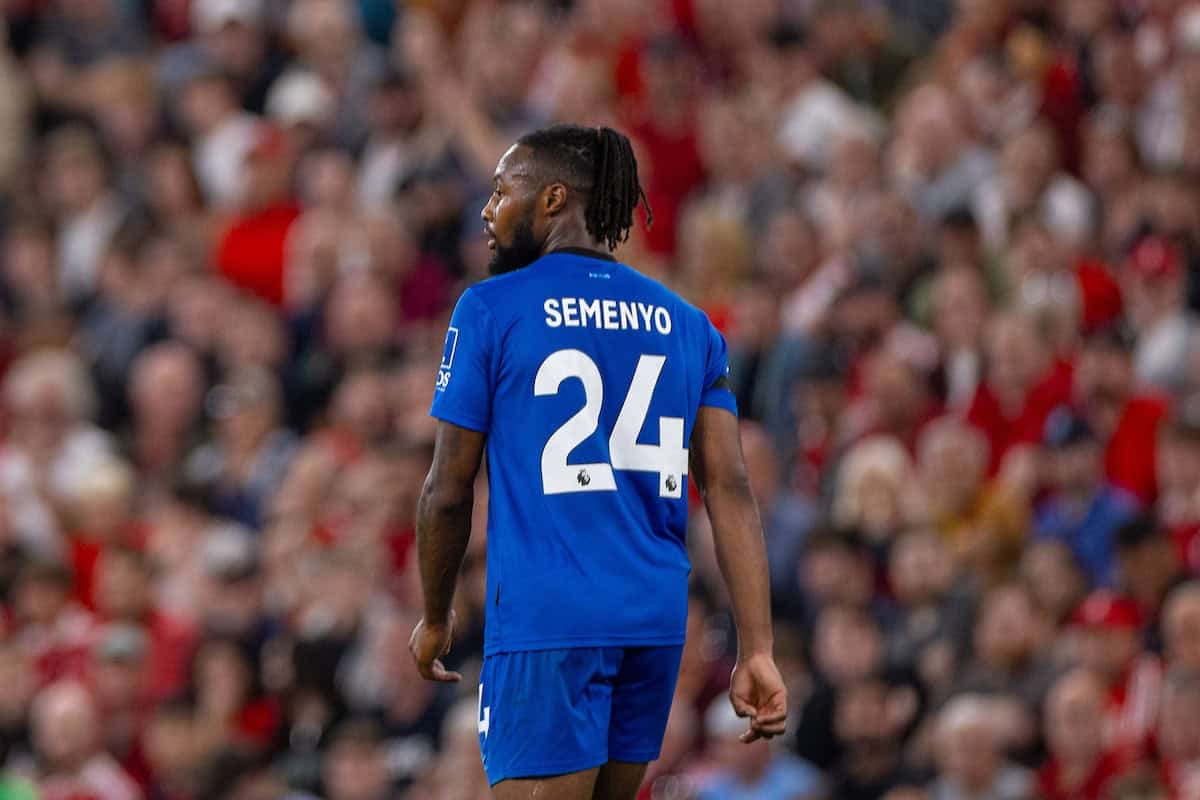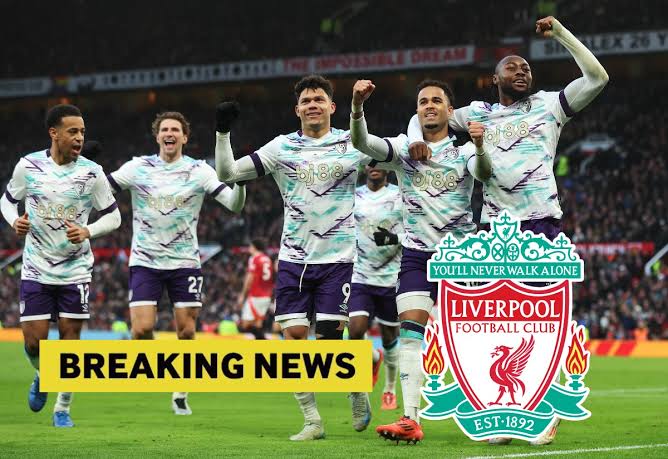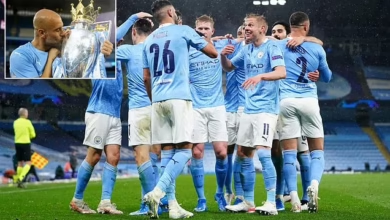Premier League Season Opens Under Dark Cloud: Racist Abuse Mars Opening Day at Anfield

The 2024-25 Premier League season began with what should have been celebration and anticipation, but instead was overshadowed by a deeply troubling incident that highlighted the persistent scourge of racism in football. Just thirty minutes into the opening fixture, proceedings at Anfield came to an unexpected halt when referee Anthony Taylor made the significant decision to pause the match following reports of racist abuse directed at Bournemouth’s Dango Ouattara Semenyo by a Liverpool supporter.
This incident, occurring on what was meant to be a day of joy and sporting excellence, served as a stark reminder that despite years of campaigns, initiatives, and supposed progress, racist behavior continues to plague the beautiful game. The fact that it happened during the very first match of the new season, watched by millions around the world and in one of football’s most prestigious venues, made the incident particularly shocking and disappointing for all involved.
The match between Liverpool and Bournemouth had been proceeding as expected, with both teams settling into their rhythm for the new campaign. The atmosphere at Anfield was typical of a Premier League season opener – electric, expectant, and filled with the hopes and dreams of another exciting year of football. However, this positive atmosphere was shattered when Semenyo, the Ghanaian international who had been making his mark in English football, reported to the officials that he had been subjected to racist abuse from the stands.
Referee Anthony Taylor, known for his experience in handling high-pressure situations and his commitment to maintaining the integrity of the game, immediately took decisive action. Recognizing the severity of the allegation and the importance of addressing such incidents without delay, Taylor made the difficult but necessary decision to pause the proceedings. This decision demonstrated the Premier League’s and its officials’ commitment to their zero-tolerance policy regarding discriminatory behavior, regardless of the circumstances or timing of such incidents.
The pause in play created an unusual and tense atmosphere within the stadium. Players from both teams gathered in the center circle, many looking confused and concerned about what was transpiring. The 54,000 spectators at Anfield, initially unaware of the exact nature of the stoppage, gradually began to understand the gravity of the situation as news filtered through the stadium and onto social media platforms.
Merseyside Police demonstrated commendable efficiency in their response to the incident. Working in close coordination with Liverpool Football Club’s security team and Premier League officials, they were able to quickly identify and locate the individual allegedly responsible for the racist abuse. The collaboration between various agencies highlighted the well-established protocols that have been developed over years of dealing with such incidents in football stadiums across England.
Within a remarkably short timeframe, a 47-year-old man was removed from his seat in the stadium and escorted from the premises by police officers. The swift identification of the suspect was made possible through a combination of witness testimonies, CCTV footage, and the increasingly sophisticated surveillance systems that modern football stadiums employ to monitor crowd behavior and ensure the safety and security of all attendees.
The efficiency of this response was particularly noteworthy given the challenges typically associated with identifying individuals within a crowd of over 50,000 people. The fact that the suspect was located and removed so quickly demonstrated the effectiveness of the systems and procedures that have been put in place to combat discriminatory behavior in football stadiums. This rapid response also sent a clear message to other potential offenders that such behavior would not be tolerated and would result in immediate consequences.
Following the removal of the individual from the stadium, Merseyside Police confirmed that a formal investigation had been launched. The police statement indicated that the suspect’s identity had been confirmed and that they would be conducting a thorough investigation into the incident. This commitment to a full investigation demonstrated the seriousness with which law enforcement agencies treat incidents of racial abuse, particularly in high-profile sporting events.
A spectator who was seated near the location where the alleged racist abuse occurred provided valuable insights into exactly what transpired during those crucial moments. According to this eyewitness, the incident began when Semenyo was involved in a particular play near the sideline, bringing him into closer proximity to that section of the crowd. It was at this moment that the alleged racist language was directed toward the player.
The eyewitness described how the abusive language was clearly audible above the general crowd noise, indicating that it was delivered with sufficient volume and aggression to be noticed by those in the immediate vicinity. Several spectators in the area reportedly turned to look at the individual responsible, with some expressing their disapproval of his behavior even before the incident was reported to the officials.
What made this particular incident even more disturbing was the deliberate and targeted nature of the abuse. According to the witness account, this was not a momentary lapse in judgment or heat-of-the-moment outburst, but rather appeared to be calculated and intentional racist language designed specifically to demean and hurt the player based on his race. This premeditated aspect of the abuse made it particularly reprehensible and highlighted the work that still needs to be done to educate fans about acceptable behavior at football matches.
The eyewitness also noted that Semenyo’s reaction was immediate and visible. The player clearly heard the abuse and was visibly affected by it, stopping his involvement in play to look toward the area of the stadium from which the abuse had come. It was at this point that Semenyo brought the matter to the attention of the nearest assistant referee, who then communicated the issue to Anthony Taylor, leading to the pause in proceedings.
This incident at Anfield occurred against the backdrop of ongoing efforts by football authorities, clubs, and anti-discrimination organizations to combat racism in the sport. The Premier League, along with other major football leagues around the world, has implemented numerous initiatives over the past decades aimed at eliminating discriminatory behavior from football stadiums and the sport more broadly.
The “Kick It Out” campaign, which has been running for over 25 years, represents one of the most visible and sustained efforts to combat racism in English football. The campaign has worked tirelessly to educate fans, players, and officials about the harmful effects of discriminatory behavior and to create an environment where such behavior is universally condemned and quickly addressed when it occurs.
Despite these efforts, incidents like the one involving Semenyo continue to occur, serving as painful reminders that racism remains a persistent problem in football. The high-profile nature of such incidents, particularly when they occur during televised matches watched by millions of people around the world, can have a particularly damaging effect on the sport’s reputation and its efforts to present itself as a inclusive and welcoming environment for people of all backgrounds.
The psychological impact on players who experience racist abuse cannot be understated. Professional footballers, despite their success and status, are human beings who are deeply affected by such hateful language and behavior. The fact that they are expected to continue performing at the highest level while dealing with this kind of abuse adds an additional layer of difficulty to their already challenging professional lives
Liverpool Football Club, to their credit, responded swiftly and decisively to the incident. The club, which has a strong historical commitment to anti-discrimination initiatives and has previously taken firm stands against racist behavior, immediately condemned the actions of the individual involved and pledged their full cooperation with the police investigation.
In a statement released shortly after the incident, Liverpool emphasized their zero-tolerance policy regarding discriminatory behavior and expressed their disappointment that such an incident had occurred at their stadium. The club also reiterated their commitment to creating an inclusive and welcoming environment for all supporters, players, and staff, regardless of their background or ethnicity
Liverpool’s response also included an apology to Semenyo and Bournemouth, acknowledging the unacceptable nature of the abuse and expressing regret that the player had been subjected to such treatment while visiting Anfield. This gesture of accountability and remorse demonstrated the club’s understanding of their responsibility to ensure that their stadium is a safe and respectful environment for all participants in the game.
The club also announced that they would be conducting their own internal investigation into the incident, working alongside the police inquiry to gather additional information and ensure that all appropriate measures were taken in response to the situation. This parallel investigation demonstrated Liverpool’s commitment to taking ownership of the incident and ensuring that lessons were learned to prevent similar occurrences in the future.
The pause in proceedings had a noticeable impact on the flow and atmosphere of the match. Both sets of players were visibly affected by the incident, with many showing concern and support for Semenyo during the stoppage. The Bournemouth squad, in particular, rallied around their teammate, demonstrating the solidarity that exists among players when facing such challenges.
Liverpool players also showed their support for Semenyo, with several approaching him during the pause to offer words of encouragement and solidarity. This display of unity across team lines highlighted one of the positive aspects of how the football community typically responds to incidents of discrimination – with collective condemnation and support for those who have been targeted.
When play eventually resumed after the incident had been addressed and the perpetrator removed from the stadium, both teams appeared to be affected by what had transpired. The initial energy and excitement of the season opener had been dampened by the serious nature of the incident, and it took some time for the match to regain its normal rhythm and intensity.
Semenyo himself showed remarkable resilience in continuing to play after experiencing the racist abuse. His decision to remain on the field and continue competing demonstrated both his professionalism and his refusal to allow the actions of one individual to derail his participation in what should have been an enjoyable sporting occasion. This response was widely praised by commentators, fellow players, and supporters from both clubs
The incident at Anfield raised important questions about the ongoing challenges facing football in its efforts to eliminate racism from the sport. Despite decades of campaigns, education initiatives, and increasingly severe penalties for discriminatory behavior, incidents like this continue to occur with troubling regularity.
One of the key issues highlighted by this incident was the need for continued vigilance and proactive measures to identify and address racist behavior in football stadiums. While the swift response in this case demonstrated that existing protocols can be effective, the fact that the incident occurred at all suggests that more work needs to be done in terms of prevention and education.
The incident also underscored the importance of bystander intervention in combating racism. The fact that nearby spectators were able to provide crucial information about what had occurred demonstrated the valuable role that ordinary supporters can play in identifying and reporting discriminatory behavior. This highlights the need for continued efforts to encourage fans to speak up when they witness such incidents, rather than remaining silent or turning a blind eye.
The timing of the incident, occurring during the opening match of the new Premier League season, also served to focus attention on the issue of racism in football at a moment when the sport was receiving maximum media coverage and public attention. This unfortunate timing meant that the incident received widespread coverage, potentially serving as both a source of embarrassment for the sport and an opportunity to reinforce important messages about the unacceptability of racist behavior.
The incident involving Semenyo at Anfield provides several important lessons for football authorities, clubs, and supporters as they continue their efforts to eliminate racism from the sport. First and foremost, it demonstrated that existing protocols for responding to racist incidents can be effective when properly implemented, but also highlighted the ongoing need for vigilance and continuous improvement in these procedures.
The swift identification and removal of the perpetrator showed that when stadium security systems, police, and club officials work together effectively, discriminatory behavior can be quickly addressed. However, the goal should ultimately be to prevent such incidents from occurring in the first place, rather than simply responding effectively after they have happened.
This incident also reinforced the importance of education and awareness campaigns aimed at changing attitudes and behaviors among supporters. While legal consequences and stadium bans serve as important deterrents, long-term change requires a shift in cultural attitudes and social norms around acceptable behavior at football matches.
The response from players, officials, and clubs to this incident demonstrated the football community’s commitment to standing together against racism. This solidarity and collective condemnation of discriminatory behavior sends an important message to potential perpetrators that such actions will not be tolerated or ignored by the football family
The racist abuse directed at Dango Ouattara Semenyo during the opening match of the Premier League season at Anfield represents a deeply disappointing reminder that football still has significant work to do in eliminating discrimination from the sport. While the swift and decisive response from referee Anthony Taylor, Merseyside Police, and Liverpool Football Club demonstrated that existing protocols for dealing with such incidents can be effective, the occurrence of the incident itself highlighted the persistent challenges that remain.
The courage shown by Semenyo in reporting the abuse and continuing to play, the solidarity demonstrated by players from both teams, and the quick action taken by authorities all represent positive aspects of how the football community can respond to discrimination. However, the ultimate goal must be to create an environment where such incidents simply do not occur, where all participants in the beautiful game can enjoy football without fear of abuse or discrimination.
As the Premier League season continues, this incident should serve as both a wake-up call and a renewed call to action for all stakeholders in football to redouble their efforts in the fight against racism. Only through continued vigilance, education, and collective commitment can football truly become the inclusive and welcoming sport that it aspires to be for people of all backgrounds and ethnicities.














